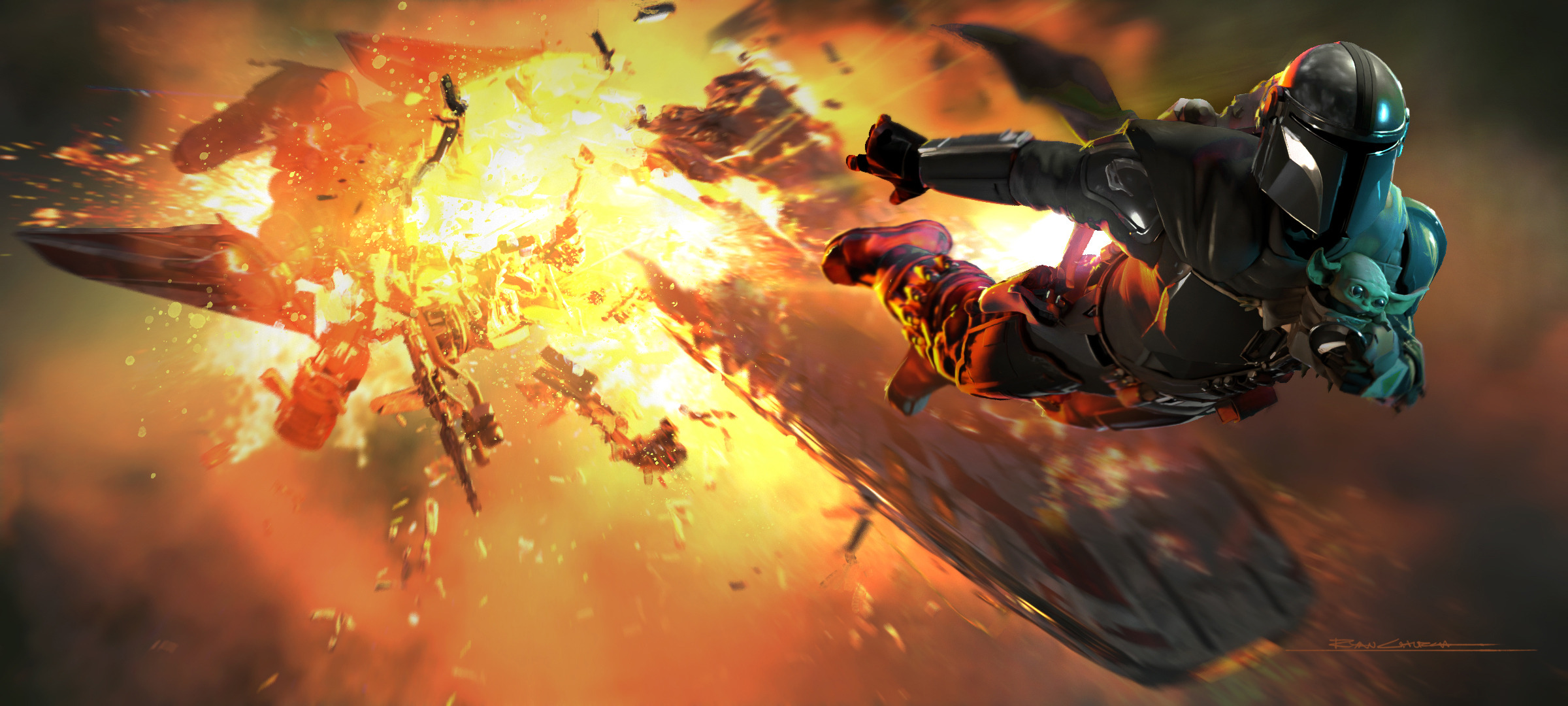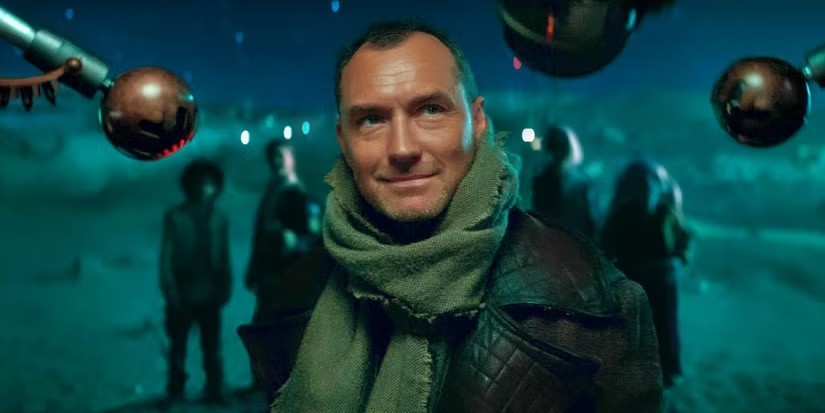
Thor: Ragnarok is one of Marvel Studios most ambitious special effects project to date. Most of the film has a CGI special effect scene.
Director Taika Waititi needed to recruit a reliable experienced special effects guru. As a result, Waititi got reliable and dependable VFX supervisor Jake Morrison to be on this wondrous project.
Morrison handled a few of Marvel Studios visual effects with Ant-Man, Thor: The Dark World, The Avengers, and Iron Man 2. He also worked on The Matrix series, 300, Speed Racer, Charlie’s Angeles: Full Throttle and The Lord of the Rings: The Two Towers.
LRM had an opportunity to speak with Morrison over the phone about his involvement with Thor: Ragnarok. He explained the challenges required by Waititi.
Thor: Ragnarok is available on Blu-ray, DVD and digital download today.
Read the interview transcript below:
LRM: For a lot of us who don’t know, what does a VFX supervisor do anyway?
Jake Morrison: We do almost everything. My word, we’re involved at the very beginning when the first script comes out usually through storyboarding, pre-vis and planning and prep. We shoot by the director’s side every day. We carry it back to the edit suite and do the post-production. It can take about two years. It’s really across the board.
One of the more interesting things about the job, if you’re on the production side, almost exclusively during the pre-production phase–you don’t really deal with any visual effects. In the sense, you don’t have footage. You don’t have things to work on. You’re actually dealing with the other departments. You’re talking to the costume designer. You’re talking to the production designer. You’re talking to the cinematographer. You’re literally making sure that everybody, as best as we can, help to realize the vision of the director. You’re making sure that all the resources are being put in a smart place.
For example, is it smart to build this wall of a castle that is 75-feet tall? No, if it’s only in two scenes. It’s best to build it 20-feet tall and fill in the rest later. We can take the rest of the resources for that and put it into the CG character that is in the scene. It’s really about planning at that phase.
The refreshing thing about that job is that you’re actually learning a lot about all the other departments’ skills sets and on how they do stuff. You’re working with everybody else who is on the top of their game. It’s very fulfilling on that point of view.
On a personal front, I’m also a DGA. I do second unit directing, as well. For example, in Thor: Ragnarok, well–I’m assuming you’ve seen the film.
LRM: Yes. Absolutely loved it.
Jake Morrison: There’s a section in there on where we do the Valkyrie flashback. We had minutes of that super slow-mo with the lighting thing. That was something that we had a lighting company come in to do it. The director actually trusted me on going in to directing that scene. I directed that for a couple of weeks. So you do everything.
LRM: That scene is indeed a beautiful shot and important to the movie. So what’s more difficult for you then–pre-production or post-production?
Jake Morrison: They’re very two different things. I would say the best analogy is that the entire film production is a triathlon. You have the pre-production on where you do all the planning. There’s the shoot at which it is its own beast. Then there’s the post-production. They are almost three completely separate things.
The interesting thing from my point of view, in a human interaction, you’ll see the different departments appear and disappear. The first assistant director, who does all the scheduling for the movie, will come on board twelve weeks before the shoot. By the end you get to the principal photography, I won’t see him again. The editor will arrive about when the first dailies are coming in and we’ll finish the picture. You’ll just see the constant flow of people.
We’re an unusual department, because on it for about two years from the beginning to the end. On most major motion pictures, there are such a large VFX component. You get this very interesting view of the whole thing. I also get the view of the second unit directing and stuff like that.
LRM: This isn’t your first go around with Marvel. I understand that you did another Thor movie and an Ant-Man movie before. Are these Marvel movies becoming more challenging on the basic fact they’re using more an more visual effects?
Jake Morrison: Yes, I say that’s true. If you go back to the first Iron Man picture, it’s a very grounded piece. There are real sets. There are real locations. They were out in the desert to do some of the set pieces there. They even had a mansion set. Those are things you can literally reach out and touch. They’re practical locations.
The effect in that picture were the suits. That’s literally the visual effects. You can trace one after another, these pictures get more and more ambitious. And less grounded in locations in the sense that they care less to find something that had already been built. It’s much more about on what you can do. I’m sure the fact is that box office proved to significantly give Marvel the ability to dream big.
The interesting thing that having to work with them for so long–they are absolutely unencumbered by the practicalities of the shoot. It’s in the sense that if they can think of something cool and we will do it.
By looking at Thor: Ragnarok, there are nearly 2,700 visual effects shots in the picture. That weighs in about ninety-eight percent of the film for visual effects. Go back to the first Matrix film, there were 400 visual effects shots. That was considered as a heavy visual effects picture twenty years ago. Now you can look at this picture and realize that ninety-eight percent of the picture is visual effects. It’s really a sea change in the way we do movies today.
LRM: With a director like Taika Waititi, he likes to do a lot of improv. Does that prove to be a lot more challenging? How do you handle special effects with different directors?
Jake Morrison: Well, every director is going to be completely different. You have to approach very film in a very different way. That’s one of the advantages on being on a film for so long, by the time you get into the beginning of post-production and he yells “cut!” you’ll really know the aesthetics of that director. Some directors are very ground in action. Some directors really focus on their characters. They all balance each other out.
In my role, I’m that digital spackle. I’ll help to fill the areas on where I can. If I can help with the planning of action sequences, then I will. If I can help with designing of the set or in post with the change of the idea in the film, there will be a lot of that stuff.
Taika’s idea of doing improv was very clear in the beginning. He said to me and very candid that he had not done a lot of visual effects blockbusters. He said, “The one thing you ought to know is that I like shooting and doing long takes. I keep rolling and keep rolling.”
[He indicated] Mark Ruffalo to be the Hulk in a scene with Chris Hemsworth, the camera should be rolling as long as he wants. He doesn’t want someone to tap on his should to interrupt to re-calibrate the head camera. He just wants to move forward and shoot.
That’s his strength. He likes the camera rolling. He sometimes just throws things at the actors. Quite literally, he threw something at Tom Hiddleston with the bottle scene. That’s Taika throwing an object at Tom while he’s tied up. He does this to keep the actors off balanced. He wants to see what else he can get out of a scene after the words on the page.
We worked very, very hard to make sure that technology was transparent to him. It’s setting the stage. Taika likes doing a play. That’s how we did it. Everything was staged to make sure it was running smoothly. We even built motion cameras in the set instead of having the motion cameras with everybody wearing the grey suits. We literally built it into the walls of the sets.
LRM: Have you ever said ‘no’ to a proposal for visual effects? Or do you always respond to it by saying that we can always figure out a solution?
Jake Morrison: No is an impossible word. We never say no. It’s almost oxymoronic. We will say yes and we’ll work it out. We will provide guidance. There are certain things that we’ll try to avoid.
What we will do is to try to make whatever it is in the scene—look like it had been shot by a single camera on location. It’s not matter if that location be in London or on an alien planet. It’s like a film crew showed up and shot it.
For a simple example, if you had a shot of a spacecraft with people in the cockpit, you have to choose very carefully to shoot it inside or outside when people are talking. Sometimes it’s okay. Sometimes it’s not. Depends on the camera move you do, it could look like you shot it on a stage.
It’s very much part of my job to make things look real. The more fantastical they are and the more real the notes are.
There has been a lot of visual vocabulary built up in cinema over the years. As proven with Ant-Man, we always shot Paul Rudd from above looking down. It’s to make him look smaller in those shots, because he’s shrunk down to a half-an-inch.
We want to make sure the film is as convincing for the audience. For a second, if they don’t believe on what they’re seeing, then you just pulled them out of the story.
LRM: Absolutely. This is a very interesting conversation. Thank you very much Jake for speaking with me.
Jake Morrison: It’s very nice to talk to you. Thank you.
Thor: Ragnarok will be available as digital download on HD, 4K Ultra HD and Movies Anywhere on February 20 and on 4K Ultra HD Blu-ray, DVD and On-Demand on March 6.

Source: Exclusive to LRM Online

 FOR FANBOYS, BY FANBOYS
Have you checked out LRM Online’s official podcasts and videos on The Genreverse Podcast Network? Available on YouTube and all your favorite podcast apps, This multimedia empire includes The Daily CoG, Breaking Geek Radio: The Podcast, GeekScholars Movie News, Anime-Versal Review Podcast, and our Star Wars dedicated podcast The Cantina. Check it out by listening on all your favorite podcast apps, or watching on YouTube!
Subscribe on: Apple Podcasts | Spotify | SoundCloud | Stitcher | Google Play
FOR FANBOYS, BY FANBOYS
Have you checked out LRM Online’s official podcasts and videos on The Genreverse Podcast Network? Available on YouTube and all your favorite podcast apps, This multimedia empire includes The Daily CoG, Breaking Geek Radio: The Podcast, GeekScholars Movie News, Anime-Versal Review Podcast, and our Star Wars dedicated podcast The Cantina. Check it out by listening on all your favorite podcast apps, or watching on YouTube!
Subscribe on: Apple Podcasts | Spotify | SoundCloud | Stitcher | Google Play



